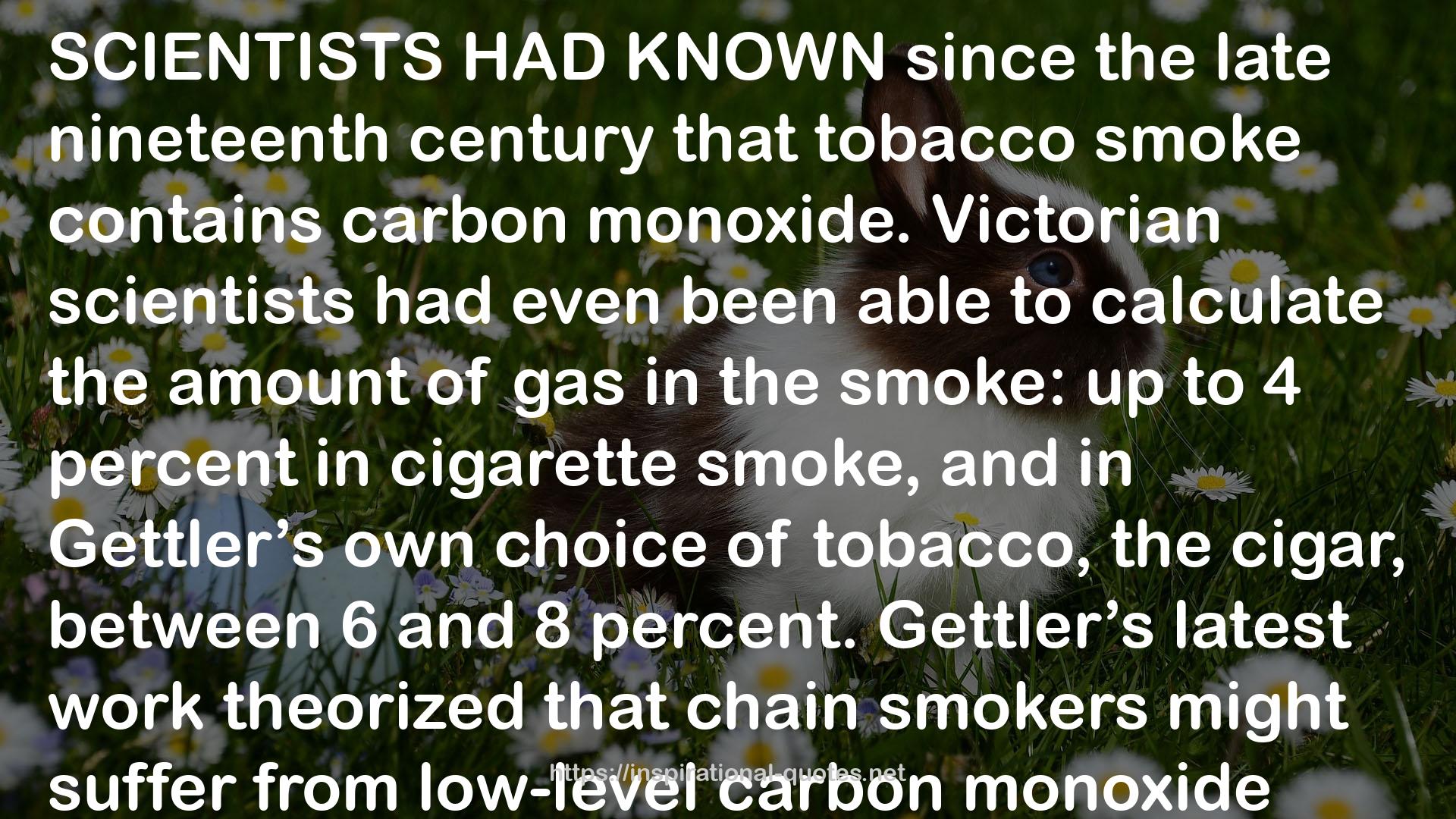" SCIENTISTS HAD KNOWN since the late nineteenth century that tobacco smoke contains carbon monoxide. Victorian scientists had even been able to calculate the amount of gas in the smoke: up to 4 percent in cigarette smoke, and in Gettler’s own choice of tobacco, the cigar, between 6 and 8 percent. Gettler’s latest work theorized that chain smokers might suffer from low-level carbon monoxide poisoning. He speculated in a 1933 report that “headaches experienced by heavy smokers are due in part to the inhalation of carbon monoxide.” But his real interest lay less in their symptoms than in how much of the poison had accumulated in their blood, and how that might affect his calculations on cause of death. He approached that problem in his usual, single-minded way. To get a better sense of carbon monoxide contamination from smoking tobacco, Gettler selected three groups of people to compare: persons confined to a state institution in the relatively clean air of the country; street cleaners who worked in a daily, dusty cloud of car exhaust; and heavy smokers. As expected, carboxyhemoglobin blood levels for country dwellers averaged less than 1 percent saturation. The levels for Manhattan street cleaners were triple that amount, a solid 3 percent. But smokers came in the highest, higher than he’d expected, well above the nineteenth-century calculations. Americans were inhaling a lot more tobacco smoke than they had once done, and their saturation levels ranged from 8 to 19 percent. (The latter was from a Bronx cab driver who admitted to smoking six cigarettes on his way to Gettler’s laboratory, lighting one with the stub of another as he went.) It was safe to assume, Gettler wrote with his usual careful precision, that “tobacco smoking appreciably increases the carbon monoxide in the blood and cannot be ignored in the interpretation of laboratory results.” THE OTHER NOTABLE poison in tobacco smoke was nicotine. "
― Deborah Blum , The Poisoner's Handbook: Murder and the Birth of Forensic Medicine in Jazz Age New York
